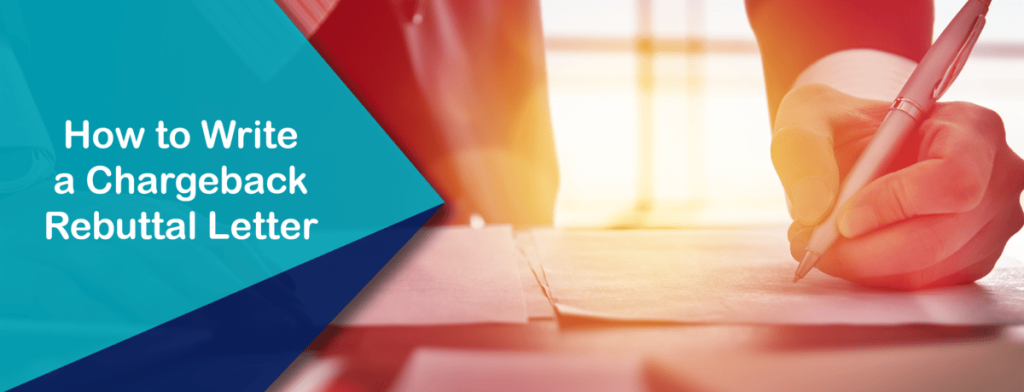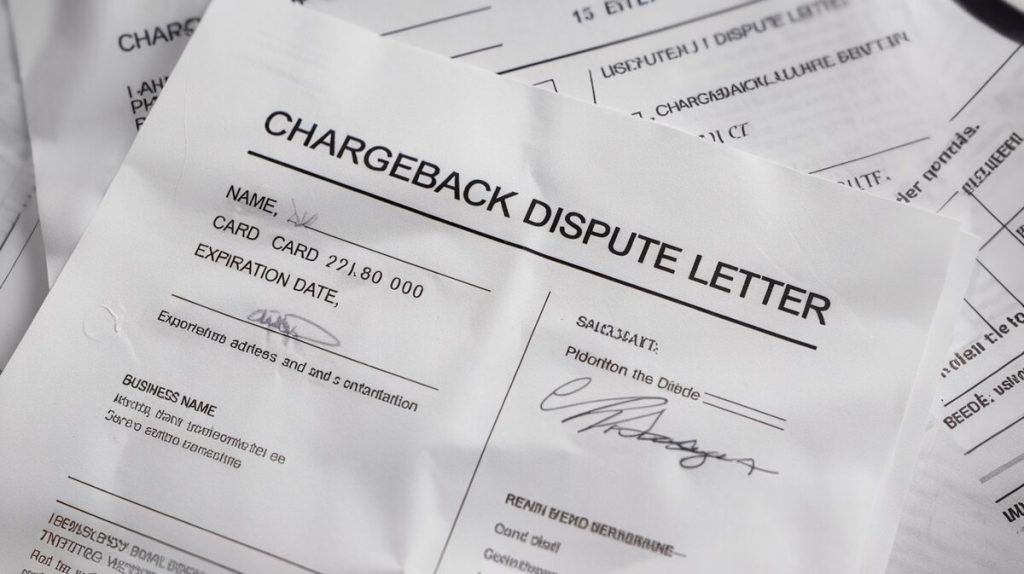A chargeback dispute letter helps businesses contest invalid claims and recover lost revenue. Chargebacks occur when a customer disputes a transaction, leading the issuing bank to reverse the charge. Crafting a solid dispute letter is critical for merchants, especially in sectors like e-commerce where chargeback rates can be high.
Understanding the Chargeback Process
Chargebacks are initiated when cardholders claim they were charged for unauthorized transactions or didn’t receive products or services. Visa estimates global fraud losses due to chargebacks could exceed $31 billion annually by 2025.
Types of Chargebacks
- Fraudulent Transactions: The cardholder denies authorizing the transaction.
- Product/Service Disputes: Claims of undelivered or defective products.
- Technical Errors: Duplicate charges or incorrect amounts.
Each card network assigns codes to these reasons. For instance, Visa uses code 13.1 for “Merchandise Not Received,” while Mastercard’s 4837 indicates fraud.
Table 1: Common Chargeback Codes and Deadlines
| Reason Code | Description | Card Network | Response Deadline (Days) |
|---|---|---|---|
| 10.4 | Fraudulent Transaction | Visa | 30 |
| 13.1 | Merchandise/Services Not Received | Visa | 45 |
| 4837 | Fraudulent Transaction | Mastercard | 30 |
| 4853 | Cardholder Dispute | Mastercard | 45 |
Understanding these codes is vital when preparing a response.
How to Write a Chargeback Dispute Letter
When contesting a chargeback, the dispute letter is your primary tool. A good letter is clear, concise, and supported by evidence. It summarizes why the chargeback is invalid and provides proof that the transaction was legitimate.

Key Components of a Chargeback Dispute Letter
- Use a Professional Tone
- Stick to a businesslike tone. Avoid emotions or unnecessary details.
- Include Critical Information
- Chargeback reason code: State the reason code (e.g., Visa 13.1).
- Transaction details: Include the date, amount, and ID.
- Evidence summary: List documents supporting your case, such as delivery confirmations or receipts.
- Summarize the Dispute
- Keep it concise. Focus on why the chargeback is invalid. Use bullet points to outline key evidence.
- Attach Supporting Evidence
- Ensure all documents—receipts, emails, delivery confirmations—are attached and properly referenced.
- Request Chargeback Reversal
- Make it clear you are seeking a reversal. For example:
“Based on the evidence provided, I request the chargeback be reversed.”
Common Mistakes to Avoid
Merchants often fail to win disputes due to easily avoidable errors.
- Missing Submission Deadlines: Each card network has a specific timeline for responding to chargebacks. For example, Visa’s deadline is often 30 days.
- Providing Irrelevant Information: Focus only on the facts. Avoid unnecessary explanations.
- Ignoring Specific Requirements: Payment processors like Visa and Mastercard have strict guidelines for submitting disputes. Always adhere to their submission methods (e.g., accepted file formats).
Best Practices for Managing Chargebacks
To handle chargebacks effectively, adopt these practices:
- Use Templates
- Pre-prepare templates for common disputes. For instance, Merchanto.org, an official Visa and Mastercard partner, provides customized templates and guidance for dispute management. Visit Merchanto.org for professional support.
- Submit Early
- Submitting three days before the deadline ensures time to correct errors if needed.
- Track All Submissions
- Keep records of every submission. Disputes can take 45-60 days to resolve.
Table 2: Industry-Specific Chargeback Success Rates
| Industry | Win Rate (%) | Average Resolution Time (Days) |
|---|---|---|
| E-commerce (Goods) | 65 | 45 |
| Digital Services | 58 | 50 |
| Travel & Hospitality | 72 | 60 |

Supporting Evidence: Critical to Winning Disputes
Evidence is crucial when disputing a chargeback. The bank will reject the claim without compelling proof.
Key Evidence Types
- Delivery Confirmations: Signed receipts proving delivery to the cardholder.
- Customer Emails: Messages showing that the cardholder received or used the product.
- IP Address Logs: Data proving the transaction was initiated from the cardholder’s known IP address.
For example, Mastercard requires documentation like delivery receipts or signed invoices to support a merchant’s claim.
Table 3: Common Evidence Types Used in Chargebacks
| Evidence Type | Description | Usage Frequency |
|---|---|---|
| Delivery Confirmation | Proof of shipment and receipt | 85% |
| Email Communication | Proof of customer satisfaction | 70% |
| IP Address & Transaction Logs | Logs showing the cardholder’s IP address | 60% |
| Refund Documentation | Proof of refunds offered or processed | 50% |
Industry-Specific Considerations
Each industry faces unique challenges in handling chargebacks. For instance:
- E-commerce merchants often deal with fraud claims. Fraudulent chargebacks cost online retailers billions each year.
- Service-based industries like travel must contend with disputes about service quality or non-delivery.
Preventing Chargebacks
Proactive measures reduce the risk of chargebacks. Some tips include:
- Clear Terms of Service: Ensure your refund policy is easy to find and understand.
- Prompt Customer Communication: Address complaints quickly, and offer refunds when appropriate to avoid disputes.
Conclusion
Writing an effective chargeback dispute letter requires precision and clarity. By focusing on relevant information and attaching strong evidence, merchants can increase their chances of winning disputes. Following best practices—like meeting deadlines, using templates, and submitting clear evidence—further improves success rates.
Key Takeaways
- Focus on essential facts: Include the chargeback code, transaction details, and evidence.
- Be concise: Don’t overload the letter with unnecessary information.
- Provide clear, compelling evidence: Use documents like delivery confirmations, signed receipts, and customer communications.
- Submit before deadlines: Late submissions are automatically denied.
- Track submissions: Ensure all communications are well-documented.
By following these guidelines, businesses can minimize revenue loss due to chargebacks and improve their dispute success rate.
This article provides a comprehensive overview of writing chargeback dispute letters, with data-backed insights and proven strategies. Maintaining a professional tone, focusing on essential details, and leveraging the right evidence are critical to succeeding in the chargeback process.



